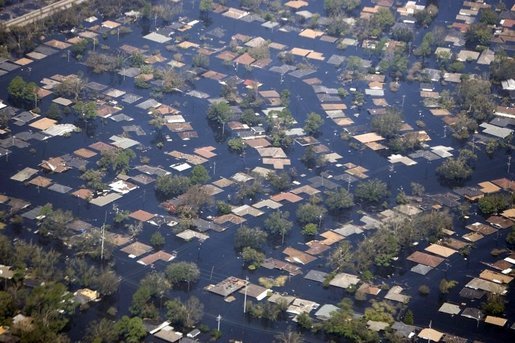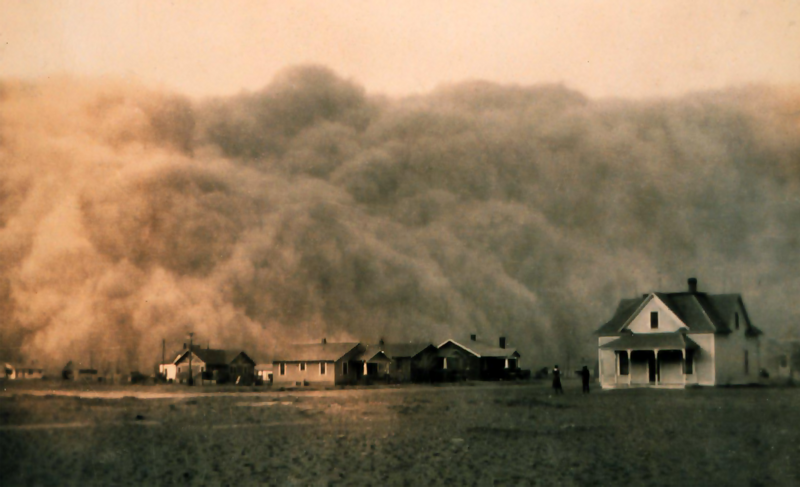Over the past many years, this Earth has faced various natural disasters that were uncertain, devastating and deadly. From hurricanes to earthquakes, from floods to landslides, there have been several disasters that erupted to destroy human lives and property.
TSUNAMI –

Tsunami is generally brought about by a submarine tremor, a submerged or beachfront avalanche, or a volcanic emission. The term tsunami is as often as possible utilized for such a wave, however, it is a misnomer, for the wave has no association with the tides.
While Japan may have the longest written history of tidal waves, the sheer demolition brought about by the 2004 Indian Ocean seismic tremor and tidal wave occasion mark it as the most wrecking of its sort in present-day times, killing around 230,000 people. The Sumatran locale is additionally acquainted with tidal waves, with quakes of shifting sizes consistently happening off the shoreline of the island.
Tidal waves being natural disasters were a frequently thought little of risk in the Mediterranean Sea and parts of Europe. Of authentic and current significance are the 1755 Lisbon seismic tremor and tidal wave which was brought about by the Azores–Gibraltar Transform Fault, the 1783 Calabrian quakes, each causing a few countless passings and the 1908 Messina quake and torrent. The tidal wave asserted in excess of 123,000 lives in Sicily and Calabria and is among the most dangerous catastrophic events in present-day Europe. The Storegga Slide in the Norwegian Sea and a few instances of tidal waves influencing the British Isles allude to avalanche and tsunamis dominatingly and less to seismic tremor actuated waves.
HURRICANE KATRINA –

Storm Katrina made landfall off the shoreline of Louisiana on August 29, 2005. It hit land as a Category 3 tempest with winds arriving at speeds as high as 120 miles for every hour. Due to the following annihilation and death toll, the tempest is regularly viewed as one of the most exceedingly awful in U.S. history. An expected 1,200 individuals kicked the bucket as an immediate consequence of the tempest, which additionally cost an expected $108 billion in property harm, making it the costliest tempest on record.
Katrina first shaped as tropical wretchedness in Caribbean waters close to the Bahamas on August 23, 2005. It authoritatively arrived at typhoon status two days after the fact, when it ignored southeastern Miami as a Category 1 tempest. The whirlwind blew through Miami at 80 miles for every hour, where it evacuated trees and killed two individuals. Katrina then debilitated to a typhoon, since storms require warm seawater to support speed and quality and start to debilitate over land. Be that as it may, the tempest at that point crossed go into the Gulf of Mexico, where it immediately recaptured quality and tropical storm status.
TRI-STATE TORNADO –

The most noticeably awful tornado in U.S. history went through eastern Missouri, southern Illinois, and southern Indiana, executing 695 individuals, harming about 13,000 individuals, and causing $17 million in property harm. Known as the “Tri-State Tornado,” the destructive twister started its upper east track in Ellington, Missouri, yet southern Illinois was the hardest hit. More than 500 of the all-out 695 individuals who died were slaughtered in southern Illinois, remembering 234 for Murphysboro and 127 in West Frankfort.
A tornado is a dim, pipe formed cloud containing brutally turning air that creates in atmospheric conditions that, in the United States, are commonly one of a kind to the focal and southern fields and the Gulf states. The turning winds of tornadoes can accomplish speeds of 300 mph, and its distance across can shift from a couple of feet to a mile. A tornado, by and large, goes in a northeasterly separation at rates of 20 to 40 mph and for the most part, covers anyplace among one and in excess of 100 miles.
Listed among the natural disasters, the Tri-State Tornado of 1925 voyaged 219 miles, went through over three hours on the ground, crushed 164 square miles, had a distance across in excess of a mile and went at speeds more than 70 mph.
Also Read: Disease outbreaks that affected the world in the past | VoxyTalksy
BHOLA CYCLONE –

The 1970 Bhola violent wind was an overwhelming tropical twister that struck East Pakistan and India’s West Bengal on November 3, 1970. It remains the deadliest tropical violent wind at any point recorded and one of the deadliest catastrophic events. At any rate, 500,000 individuals lost their lives in the tempest, basically because of the tempest flood that overflowed a significant part of the low-lying islands of the Ganges Delta. This typhoon was the 6th cyclonic tempest of the 1970 North Indian Ocean violent wind season, and furthermore the season’s most grounded.
The cyclone arrived at its top with winds of 185 km/h on November 11 and made landfall on the shore of East Pakistan (presently Bangladesh) on the next evening. The tempest flood crushed a large number of the seaward islands, clearing out towns and wrecking crops all through the region. In the most seriously influenced Upazila, Tazumuddin, over 45% of the number of inhabitants in 167,000 was executed by the tempest.
NEPAL EARTHQUAKE –

Nepal no other natural disasters but the earthquake of 2015, additionally called Gorkha tremor, an extreme seismic tremor that struck close to the city of Kathmandu in focal Nepal on April 25, 2015. Around 9,000 individuals were executed, a huge number more were harmed, and in excess of 600,000 structures in Kathmandu and another close by towns were either harmed or obliterated. The tremor was felt all through focal and eastern Nepal, a great part of the Ganges River plain in northern India, and northwestern Bangladesh, just as in the southern pieces of the Plateau of Tibet and western Bhutan.
On May 3, the UN World Health Organization (WHO) reported the foundation of another field office in the hard-hit Gorkha District as a team with the GoN and other alleviation associations. The workplace is planned to start the procedure on May 4 and will bolster reaction entertainers, including the GoN area well-being office, offering both crisis and routine social insurance benefits in the region.
The Health Cluster reports that well-being groups have sent to Gorkha and Sindhuli locale in light of reports of flu and diarrheal cases. The group has likewise sent versatile facilities by helicopter to towns in the Langtang Valley and Rasuwa District. As of May 1, roughly 25,000 patients in Kathmandu Valley had gotten well-being administrations since the seismic tremor.
AUSTRALIAN BUSHFIRES –

Australia is no more abnormal to bushfires, be that as it may, the 2019-2020 season ends up being remarkable from various perspectives. It was one of the natural disasters, the primary major bushfires started even before the official appearance of spring in June and afterward, new wild flames jumped up toward the start of Sept. 2019.
At any rate, 34 individuals kicked the bucket in the bushfires since October, most in January; two others passed on in September and are not typically remembered for the count. Most of the passings were twenty-five in New South Wales, with one in the Australian Capital Territory, five in Victoria and three in South Australia. Almost 3,000 homes and a few thousand structures (counting organizations, out structures and homes) were pulverized the nation over. A significant number of these storehouses were on farmland which will increasingly affect the horticultural business, notwithstanding the consumed soil.
DUST BOWL –

Of the considerable number of dry spells that have happened in the United States, the dry season occasions of the 1930s are generally viewed as the “dry season of record” for the country. The 1930s dry season is frequently alluded to as though it were one scene, however, it was really a few particular occasions happening in such fast progression that influenced areas were not ready to recoup satisfactorily before another dry spell started. The term Dust Bowl was begotten in 1935 when an AP columnist, Robert Geiger, utilized it to portray the dry season influenced south focal United States in the outcome of awful residue storms. In spite of the fact that it, in fact, alludes toward the western third of Kansas, southeastern Colorado, the Oklahoma Panhandle, the northern 66% of the Texas Panhandle, and northeastern New Mexico, the Dust Bowl has come to symbolize the hardships of the whole country during the 1930s.
NEVADO DEL RUIZ ERUPTION –

The Armero catastrophe was one of the significant natural disasters as of the emission of the Nevado del Ruiz stratovolcano in Tolima, Colombia, on November 13, 1985. Following 69 years of lethargy, the fountain of liquid magma’s emission got close by towns unconscious, despite the fact that the administration had gotten alerts from various volcanological associations to clear the zone after the discovery of volcanic action two months sooner. The underground was trembling and a horrendous thunder followed. A blend of water and flotsam and jetsam overpowered the whole city. In 20 to 30 minutes three or four lahars (mudflows of volcanic material) happened.
Streaming blends of water, ice, pumice, and other stone garbage poured off the summit and sides of the spring of gushing lava, shaping “lahars” that overflowed into the waterway valleys encompassing Ruiz. The lahars joined ordinary waterway channels, and huge flooding and landslides were exacerbated by overwhelming precipitation. Inside four hours of the emission, the lahars went more than 60 miles, killing in excess of 23,000 individuals, harming more than 5,000, and obliterating in excess of 5,000 homes. Hardest hit was the town of Armero, where seventy-five percent of the 28,700 occupants kicked the bucket.



























